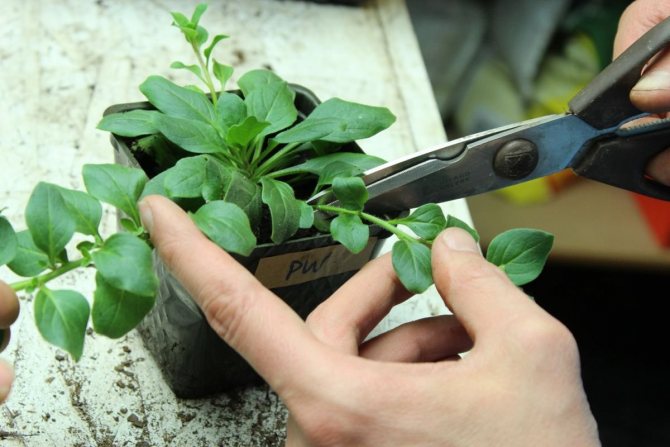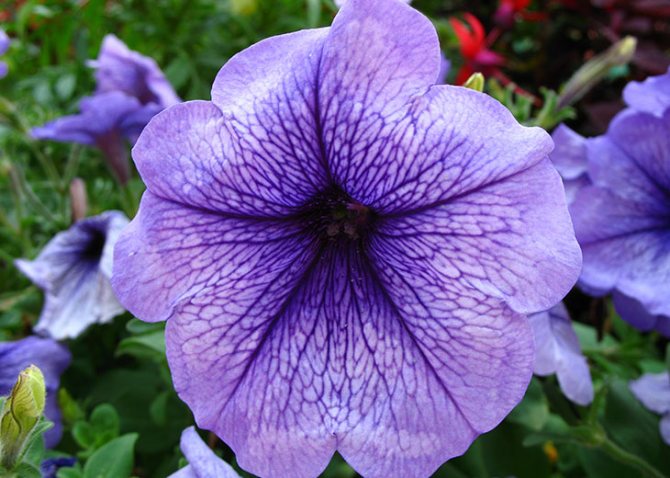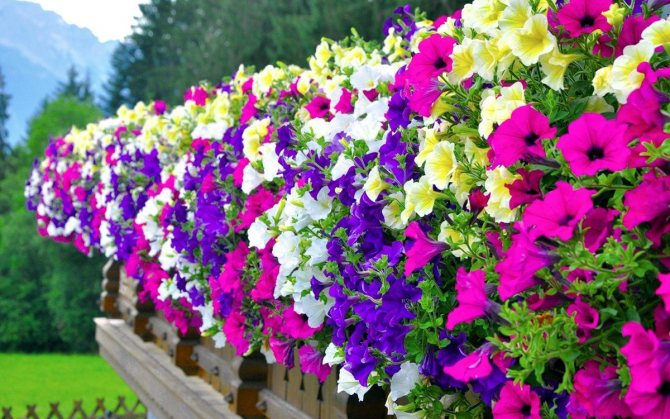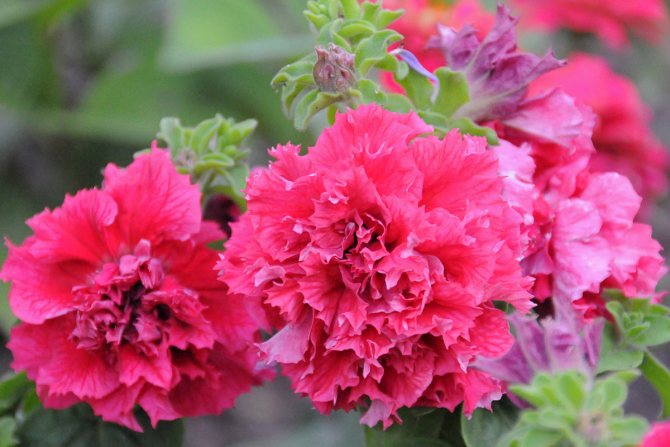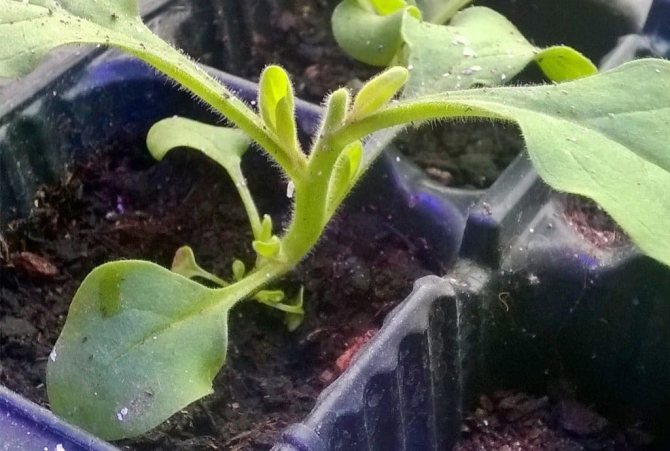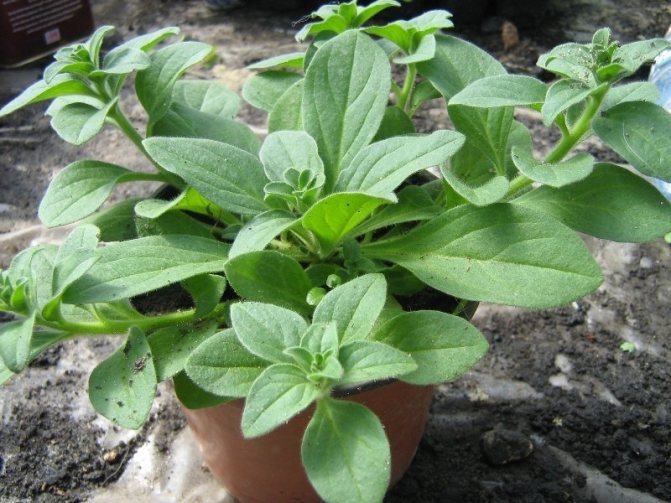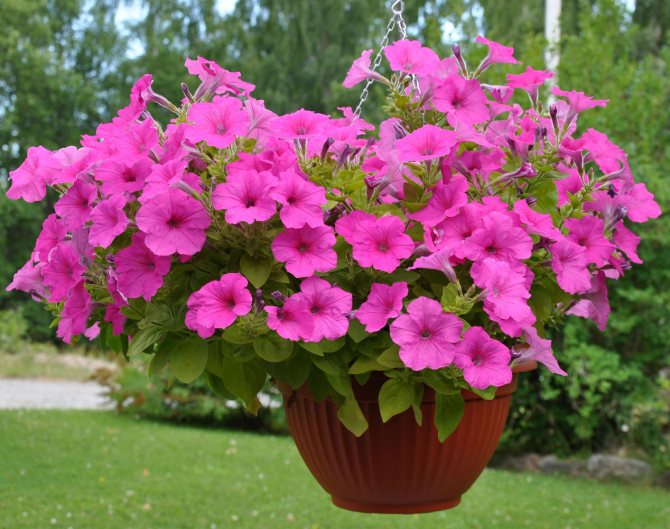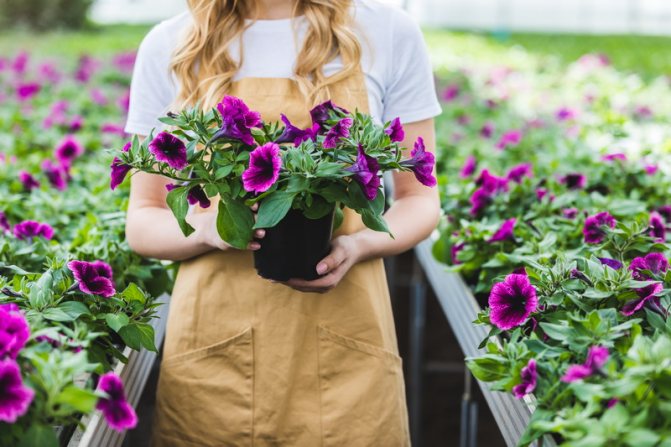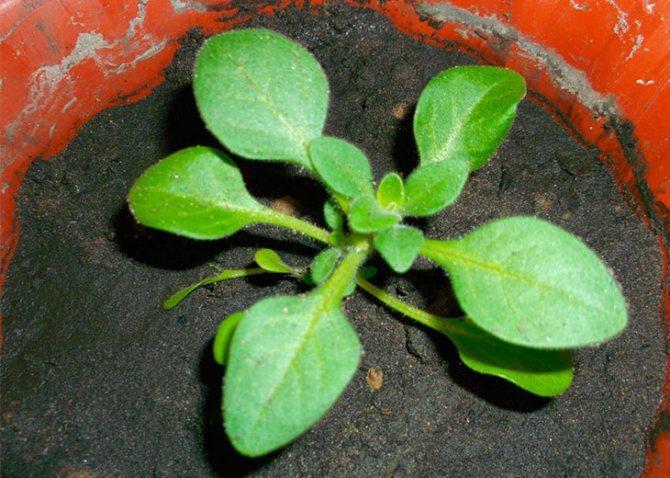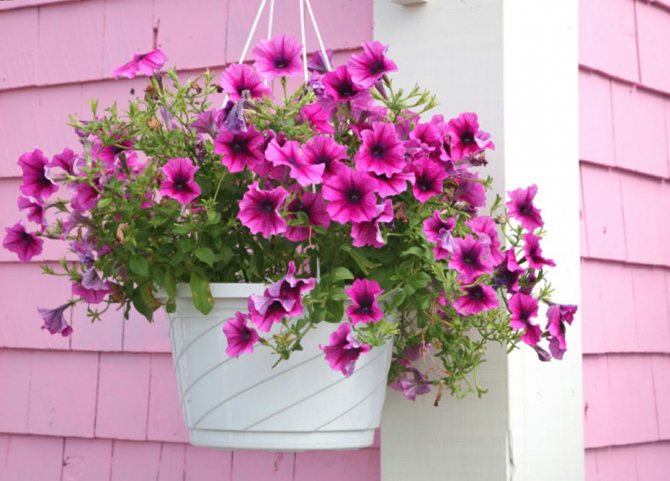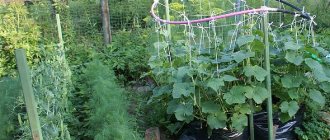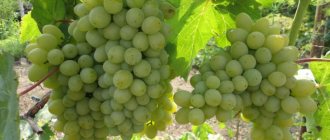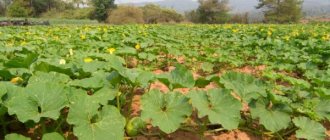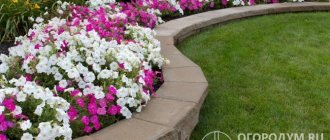Petunia is one of those plants that, after pinching, only become more beautiful. It responds well to pinching and shoot formation. In the article we will tell you in detail how to pinch a petunia and when to do it, the features of pinching different varieties of petunias.
To get a lush flower with many flowering shoots, you need to correctly form the crown of the plant. If the petunia is not pinched and allowed to grow freely, it can form an elongated bush that will fall to one side.
What is pinching
The pinching procedure is also called pinching and is breaking off / pinching off / cutting off the tip of the shoots. Translated from German, the word "pinching" means "remove the end", and this translation perfectly reflects the essence of the procedure.
The purpose of the operation is to awaken the lateral buds on the shoots, which are dormant before pinching.
After the procedure and the healing of the cut site, the remaining stem thickens, sometimes - woods, becomes stronger, stocky. The shade of the foliage changes for the better - it becomes brighter, more saturated. Axillary buds swell, become more voluminous - as a result of this, the flowers that then bloom from them delight with their large size and splendor.
Pinching is generally required to produce stronger shoots, a fuller shrub, and more beautiful, vibrant flowers and foliage. This procedure is aimed at increasing the visual appeal, decorativeness of the petunia.
The most popular petunias
As the breeding work continued, more and more interesting varieties quickly began to appear. Some varieties are compact and have short shoots. So, let's take a look at the most popular petunias.
- Grandiflora. It is a plant with large, delicate flowers about 10 cm in diameter.
- Multiflora. This petunia has medium flowers (about 5 cm in diameter). Multiflora is weather resistant.
- Milliflora. A plant with numerous but small flowers (about 3 cm in diameter).
- Petunia Nana. This group includes varieties with short shoots reaching about 40 cm in length.
- Cascadia. Cascading petunias are distinguished by small leaves. Plants bloom for a long time, show resistance to bad weather.
- Tumbelin. The flowers of these varieties are large, slightly drooping, fragrant.
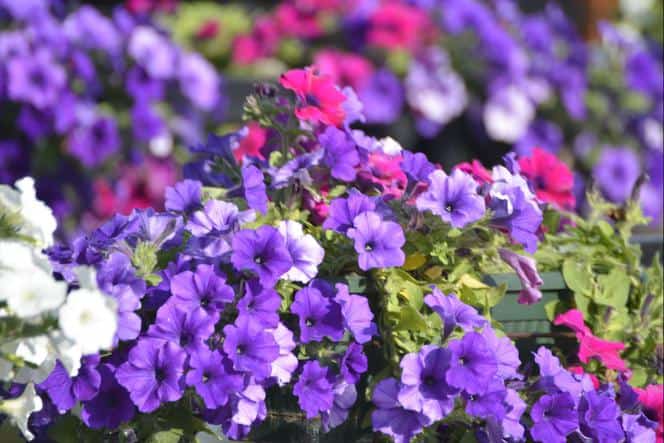
Benefit


We will find out why you need to pinch the petunia.
Crown formation
This is the main goal of the procedure. Pinching makes it possible to get a compact and luxuriantly flowering plant from a small sprout, pleasing to the eye for a long period. A well-groomed and well-formed crown always looks much more neat.
Termination of the growth of apical shoots
Due to the fact that pinching eliminates the top of the upward-growing shoots, the lateral branches begin to grow more actively. As a result, the petunia does not stretch, but becomes a round small bush, which looks more attractive.
In addition, the more side branches there are, the more flowers will appear, not to mention an increase in bushiness.
Lignification of the lower part of the shoots
Although petunia is a herb in fact, the lower part of the shoots after pinching it becomes very strong, almost lignified.Thanks to this, the plant will be stronger, stronger and more resilient, able to withstand weather disasters.
What is it for?
Pinching (or pinching) - breaking off / pinching off the top of a plant shoot with nails. After that, the remaining part of the stem stiffens and begins to thicken, the leaves become more saturated color, and the buds in the axils increase in size. In horticulture, this process is done in order to obtain new strong shoots and a more beautiful appearance. However, this method works if pinching was performed before the growing season ended. It is not difficult to get a strong and eye-pleasing living decoration from a small sprout, the main thing is to know how to pinch a petunia correctly and strictly follow the rules.


When pinching, what conditions are needed


Pinch the petunia when the seedlings begin to grow actively. And this is a clear sign that it is better not to delay with the procedure - otherwise the seedlings will stretch out, and the bush will turn out to be ugly. By the time of the first pinching, 40-50 days should have passed from the moment of planting the seeds.
Only healthy plants are pinched: it is advisable to remove weak and defective seedlings immediately so as not to waste time and energy on them. What state the plants should be in: they should be grown up, strengthened at the time of the procedure, have several leaves (no more than 5-6).
You will need a garden shears or a small pruner, and a container in which you will fold the cut off tips of the shoots. Next, you will learn how to pinch a petunia step by step.
Petunia care after pinching
After pruning, the flowers weaken and need feeding. Therefore, 2-3 days after pinching, mineral and organic fertilizers are added to the soil. They also use growth stimulants that saturate the soil with nutrients.
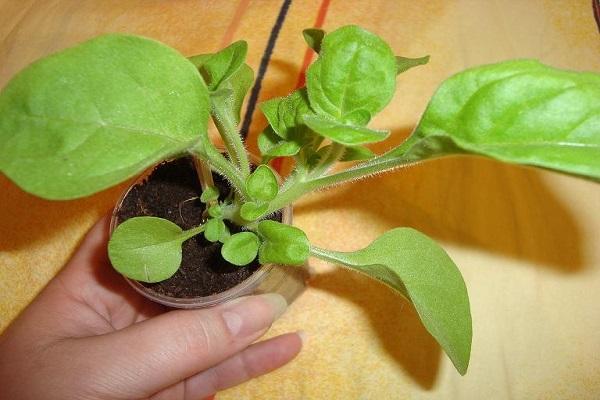

In the future, fertilizers need to be applied to the soil every two weeks. In this case, it is better to use fertilizers that contain a lot of nitrogen. Also, when caring for petunias, you need to regularly moisten and loosen the soil.
Process description
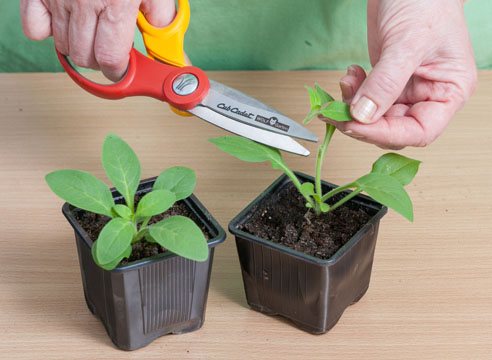

In short, pinching a petunia is the removal of the top of the shoot above the fifth or sixth top leaf. The procedure is carried out with a pruner, and some growers simply use their own fingers, breaking off the shoot in the right place.
Due to the fact that the main shoot is broken, a new active growth point is formed in this place, from which lateral shoots will branch out in different directions. Please note that immediately after the procedure, petunia seedlings slow down their development, but quickly recover and begin to grow even more actively.
If the seedlings are intended for planting in open ground, the procedure is also carried out after rooting the seedlings in a new place. However, after transplanting, several days must pass for the plant to adapt.
When grown in greenhouse conditions, pinching is usually carried out after the pick has been made, since there is no point before.
Step by step guide:
- find the very bottom of the sprout;
- count 5-6 leaves from the bottom, you can also 4;
- we pinch the part of the shoot located above the counted leaf with pruning shears (fingers, scissors);
- Sprinkle the cut area with wood ash.
A month after the first procedure, a second pinching is usually performed.
Attention: in one procedure, no more than one fifth of the plant shoot can be removed. Some growers are late and then immediately cut off a third of the shoot, or even half: such a gross intervention does not benefit the plant, it can even destroy it.
The essence of the procedure
Pinching involves removing the top of the plant, which stimulates the formation of additional lateral shoots. After removing the upper part, lateral stems grow, on which flowers are later formed.The essence of the procedure is to obtain abundant flowering at minimal cost. There is no need to grow whole gardens of petunias when you can get the same abundant flowering from one bush.
Many gardeners emphasize the importance of pinching. But not everyone uses these recommendations. As a result of abundant flowering, there is no need to wait, for which many refuse to grow this magnificent plant in their own garden.
What will happen if the petunia is not pinched? The lack of pinching leads to the fact that the plant actively strives upward and under the weight of its own weight there are risks of violating the integrity of the entire flower. As a result, only one flower can be obtained from one seed, while after pinching from one seed, a whole bush with a stable root system is formed.
As for pinching the buds, this procedure is also important. As soon as the flower has faded, the bud must be carefully pinched off. If this is not done, the pollinated flower will form a seed box. This will take all the vital forces of the petunia, which will adversely affect the flowering of other flowers and the formation of additional shoots.
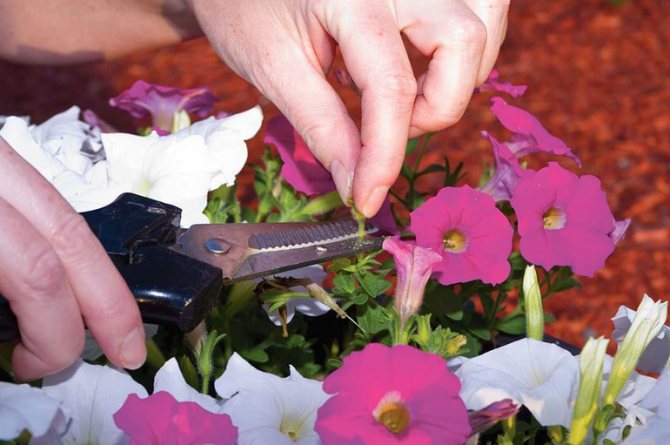

As soon as the flower has faded, it must be carefully pinched off.
How to pinch different types of petunias
Gardeners grow several popular types of petunias:
- cascading;
- ampelous;
- bush;
- terry.
Consider the features of pinching all these varieties.
Cascade
This plant must be pinched two to three times during the growing season. The procedure will allow the plant to actively bush and become more luxuriant. When pruning a cascading petunia, you need to imagine how it will then look, since it is especially difficult to shape this type of flower. It is important to achieve a uniform shape, symmetrical on both sides.
Ampelnaya
This plant is already originally, at the genetic level, designed to form a lush, well-flowering bush. Therefore, many varieties (especially new) ampel petunias do not need pinching at all. However, the first pinching of the seedlings is still desirable - it will guarantee that the bush will turn out to be well branched.
Bush
The plant is pinched in the traditional way to achieve the correct and lush shape of the bush.
Terry
Since all terry varieties are hybrid and selective, they rarely need pinching. Initially, they form lush bushes with abundant leaves and flowers, so the procedure can be neglected. An exception is made if the seedlings are strongly stretched to one side.
Features of pinching petunias in pots and pots
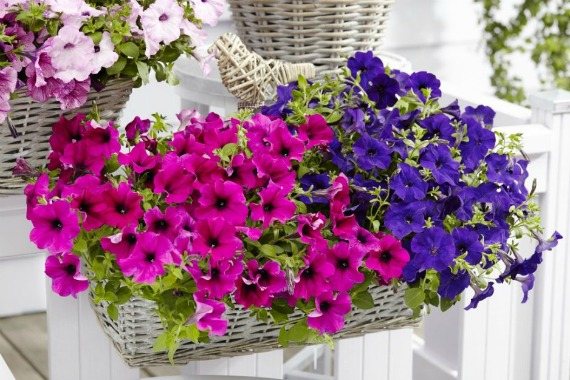

Petunia is so attractive for its abundant and vibrant flowering that it is often grown in pots and pots to decorate the home interior. In the same way, they bring beauty to the recreation area at the dacha and the summer cafe. They decorate balconies, loggias, terraces, creating amazing compositions of flowers of different colors.
To achieve the original appearance of a flower grown in pots and pots, the formation of the crown is carried out, and it consists in pinching the side shoots.
The number of plants planted in individual vessels depends on their size. So, with a diameter of 30 cm, 2-3 plants will be enough, which, after pinching, will grow and fill the entire space.
On a note. Be careful: excessive thickening can lead to the emergence of foci of infection, due to insufficient ventilation.
As a rule, bushes of petunias are planted in a pot (pots), which have already been pinched at a "young" age, and now they are actively releasing side shoots. Get creative with your pruning and shape the flower to your liking. It depends only on the florist how long he wants to see the shoots of petunias falling in a bright and colorful waterfall.
The fact is that the stems of ampelous and cascading petunias can grow up to 80 centimeters or more, and if you do not slow down their growth, then over time the lower part will become bare and the plant will lose its decorative effect. To prevent this from happening, the stems are regularly pruned, which encourages the plant to grow and develop lateral shoots.
Also, the reason for the need for pruning may be the height of the flowerpot. It is unlikely that a florist will want the flower to spread over the windowsill or the ground, occupying a useful area and complicating the care of the plant.
Useful Tips


We will tell you in detail about the important nuances of the procedure and the care of petunia after it.
To minimize injury to delicate seedlings, carry out the procedure carefully and only with clean instruments.
If the shoot is weak, you should not pinch it too much, all the more you should not pick off the leaves. Such an instance must be treated with care, since otherwise it may not survive the procedure or will get sick.
It is best to carry out the procedure in the evening, when the sun sets below the horizon: at this time, the rays become not as scorching and aggressive as during the day.
When pinching petunia not at home, but in the open field, choose a dry and warm day for the procedure - this will help the slices heal faster.
To make the buds larger and brighter, do not forget to fertilize the petunias with suitable minerals when leaving. The plant responds very gratefully to feeding. After the next pinching, feed the petunia - it will recover faster, it will grow more actively.
Proper care should also include watering, spraying, removing faded buds. Such care will positively affect the health and appearance of the plant, make it lush, decorative, pleasing to the eye.
In order for the side shoots to grow faster and become more branched, it is useful to lower the air temperature at night.
Blooming petunia can also be pinched. However, at the same time, no more than 2-3 shoots from the plant are removed in one procedure. Additional spraying with succinic acid will make it easier for the plant to survive the operation.
Possible mistakes
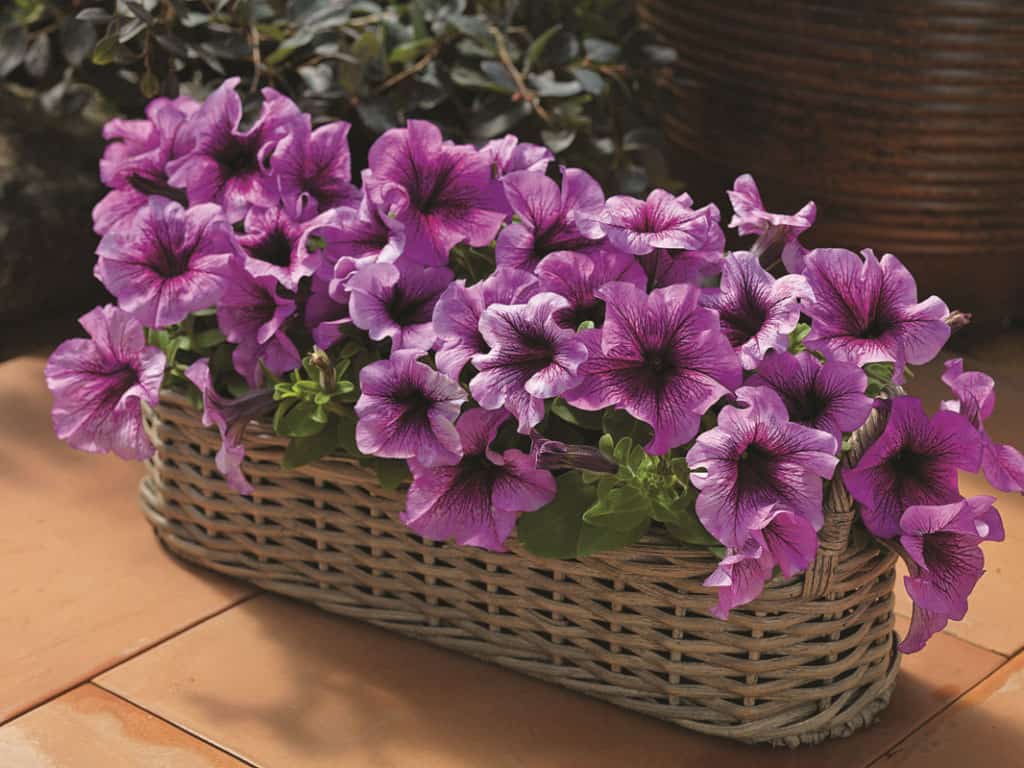

Pinching is done only for healthy plants. If the petunia is weak, has an unhealthy appearance, they wait until it gets stronger and starts growing again. To do this, they revise the conditions of detention, regulate watering, and make top dressing.
Pruning seedlings is carried out on time. If it greatly outgrows and the first flowers have time to appear, it is carefully cut off. Soon, many new buds are formed in its place. Also, pinch the main stem at the level of 4-6 leaves. You can't rush to form a bush. If the seedlings are very small and have not reached a height of 5 cm, pinching will only harm the plant.
To get a beautiful, lush petunia bush, you need to pinch correctly and in a timely manner. This procedure stimulates the formation of lateral shoots and a large number of flowers.
Cuttings left - what to do with them


After the pinching procedure, strong, high-quality and healthy shoot tips usually remain - a full-fledged planting material. Thus, with the help of the remaining tops, you can make your petunia population even richer.
To germinate such a stalk, you need to remove the lower leaves from it. Otherwise, they will rot in the water as the roots grow back. After removing the foliage, the cutting is placed in a container of water. Then you need to wait a while until the roots appear. And after their appearance, the stalk is planted in the ground in the usual way (see photo).
Do not forget to pinch the cutting when it grows actively and begins to stretch.
Description and characteristics of the petunia plant
Brazil and Uruguay are considered the birthplace of this beauty, from where in the 18th century it was brought by the French botanist Jean Lamarck, who searches for rare plants.
The plant is a perennial, however, it is mainly grown as an annual, and, with the onset of the first frosts, is simply thrown away. In late autumn, petunia can be transferred into a container with nutrient soil, brought into the room and provided additional lighting. Then this flower will delight you all year round.


The flower is a shrub 15 to 90 cm high with creeping stems forming axillary shoots of the second and subsequent order. Perennial leaves, differing in various shapes and sizes, without teeth and grooves, strongly pubescent. Flowers of the correct shape: simple, semi-double, double. They are distinguished by a delicate aroma and a variety of colors. The fruit of the plant is represented by a box with 300-800 pieces of small seeds.
The beauty blooms in late June - early July, delighting with its beauty until the onset of significant frosts. Calmly withstands a short drop in temperature to -3 degrees. Propagated by sowing seeds or cuttings. Seedlings begin to grow in the third decade of January, using additional lighting.
Important! When planting in a permanent place, the plant must be provided with well-lit areas, sufficient watering, and ventilation.


